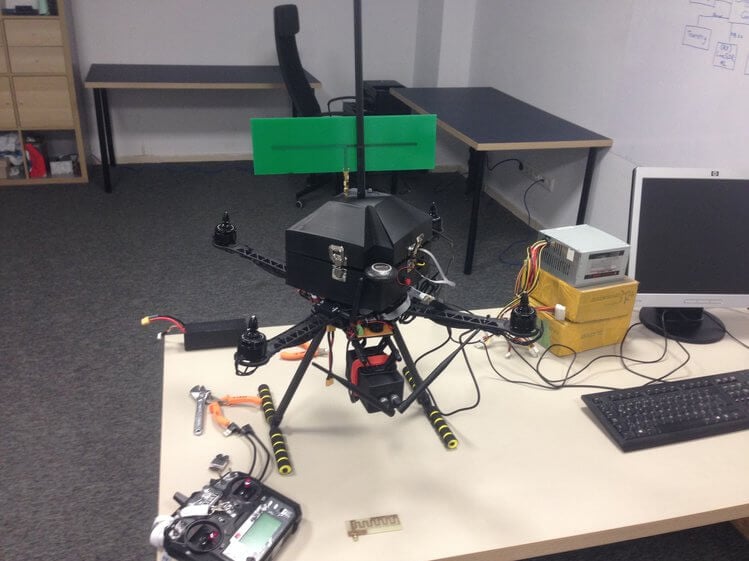Dronesense: A LimeSDR Based Drone Detector and Jammer
Over on the LimeSDR CrowdSupply blog, Ogün Levent has submitted a short article about his "Dronesense" project. Dronsense is a spectrum-scanning and jamming system based on the LimeSDR. The LimeSDR is a US$299 12-bit TX/RX capable SDR that can tune between 100 kHz – 3.8 GHz, with a maximum bandwidth of up to 61.44 MHz.
Drone defense is a problem that is plaguing airports, cities, sensitive buildings and the military. These days anyone with a low cost off the shelf drone can cause havoc. Solutions so far have included net guns, drone deployed nets, wideband jammers, GPS spoofers, traditional and passive radar systems, visual camera detection, propeller noise detection, microwave lasers and SDR based point and shoot drone jamming guns like the IXI Dronekiller.
Both the expensive made for military IXI Dronekiller SDR gun, and the LimeSDR Dronesense work in a similar way. They begin by initially using their scanning feature to detect and find potential drone signals. If a drone signal is detected, it will emit a jamming signal on that particular frequency, resulting in the drone entering a fail-safe mode and either returning to base or immediately landing. Specifically targeting the drone's frequency should help make the jammers compliant with radio regulations as they won't jam other legitimate users at the same time. We note that this method might not stop drones using custom RF communications, or fully autonomous drones.

However, unlike the IXI Dronekiller gun, Dronesense requires no pointing and aiming of a gun like device. Instead it appears to be mounted on another drone, with an omnidirectional jamming antenna. It runs with a GNU Radio based flowgraph which decides if a detected signal is from a drone, and if so activates the jammer. Unfortunately the software and further details don't appear to be available due to non-disclosure agreements.
Regarding legality – do you all think FCC regulations will be considered in war zones? Or other countries in general? Should people who are attacked just roll over and not resist?
You ladies…. it’s not jamming. That’s what you call it. I’m just transmitting at that same frequency. Why is my data/transmission being prosecuted but this out-of-range drone transmission isn’t?
It’s not my fault my automated smart home transmissions are disrupting this creepers privacy-invasion… sorry I mean ‘responsible drone user’.
I guess society isn’t equal….
Depending on the power output and quality of the RF stages, there is a high likelihood of spurious emissions causing interference to the ILS and GPS landing systems of incoming aircraft with potential risk of life. I can’t imagine any airport giving authorization for use of this within controlled airspace.
As a responsible drone pilot who gets hassled every time I go out and fly I can only tell you where I’d like to “jam” this thing
As Wesley said, it is still illegal to use this (or any jamming device) in the USA.
47 CFR 333 quite clearly says “No person shall willfully or maliciously interfere with or cause interference to any radio communications…”
Every jammer, no matter how focused and targeted, no matter how much you wish you could, is illegal in the US.
Mmmm afraid you’re wrong. Any jamming, including of a specific frequency is expressly forbidden by the FCC. This device is illegal.